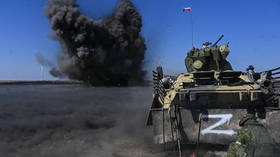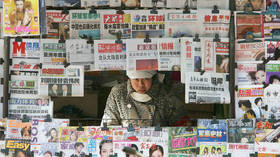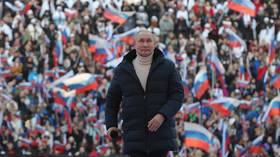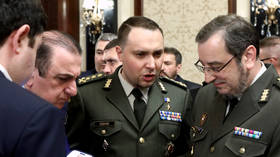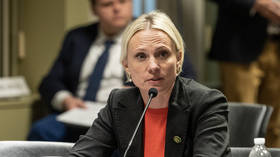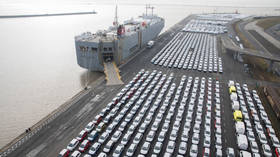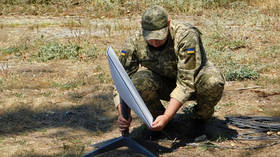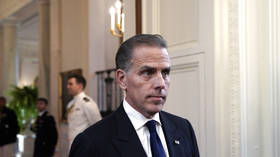Ivan Timofeev: In 2022, the world as we knew it ended. Decades of conflict lie ahead
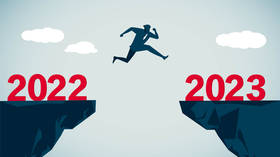
In 1989, the ‘short 20th century’ concluded with the ‘end of history’ – the victory of the Western capitalist world over the Soviet socialist project. At that time, there was not a single country, or community, left in the world which offered a realistic alternative to the US-led view of the organization of the economy, society, and the political system.
The Soviet bloc dissolved itself. A large part of it quickly integrated into NATO and the European Union. Other major world players had begun to integrate organically into the Western-centered world system long before the end of the Cold War. China retained a high level of sovereignty in terms of its domestic order, but quickly moved into a capitalist economy, actively trading with the US, EU, and the rest of the world.
Beijing, meanwhile, shied away from promoting the socialist project abroad. India had avoided claiming global projects of its own, although it has, to this day, also maintained a high level of identity in its political system and has so far shied away from joining blocs and alliances. Other major players also remained within the rules of the ‘liberal world order’ game, avoiding attempts to challenge it.
Individual rebels, such as Iran and North Korea, did not pose much of a threat, although they raised concerns with their stubborn resistance, persistent promotion of nuclear programs, successful adaptation to sanctions, and for the most part, any potential military attack was ruled out because of its high cost. For a brief period, it seemed that the global challenge might come from radical Islamism. But it could not shake the existing order either.
The initially spectacular military campaigns by the US and its allies in Iraq and Afghanistan ended up doing little to democratize the Islamic world. But this did not bring about a global game-changer either. Moreover, the fight against radical Islamism has even strengthened the identity of the Western world as the guardian of the secular and rational, as opposed to the religious and fundamentalist.
Russia had, at first glance, found its niche in the new world order. The country had become a peripheral economy specialized in the supply of raw materials. Its market was eagerly exploited by global Western companies. Its large bourgeoisie became part of the global elite, becoming ‘global Russians’. Its industry either degraded or incorporated itself into global chains. Human capital was gradually shrinking. On the whole, Russia was perceived by Western partners as a withering, yet fairly predictable, power. Its occasional outbursts of indignation over the bombing of Yugoslavia, the war in Iraq, or the revolutions in the post-Soviet space were somehow smoothed over and were not considered a big problem.
It was possible to criticize Moscow for its ‘legacy of authoritarianism’ or its human rights record, to lecture it periodically – mixed with praise for its cultural affinity with the West, but at the same time making it clear that there would be no deeper integration. Timid attempts by Russian businesspeople to buy into the likes of Opel or Airbus or to acquire assets in other areas – in other words, to establish slightly more equal and interdependent economic relations – were unsuccessful. Moscow was also very explicitly told that its concerns about Western military involvement in the post-Soviet space had no legitimate basis and would be ignored.
Overall, in the late 2000s and even in the 2010s, it was possible to speak of a fairly high degree of sustainability of the order that had been established since the end of the Cold War. However, in 2022, it finally became clear that the ‘end of history’ was over. The world has now resumed its usual course of global upheaval, the struggle for survival, fierce competition, and rivalry.
In order to adequately assess this new phase, it is important to understand the meaning of the idea of the ‘end of history’. Its identification with Francis Fukuyama’s well-known concept provides only a superficial understanding; it has much deeper normative and political-philosophical roots. These can be found primarily in two modernist political theories – liberalism and socialism. Both are based on a belief in the limitless power and normative value of the mind. It is the mind that enables man to take control of the forces of nature as well as – the elemental forces, and darker sides of human nature and society.

In the US, liberalism and realism have coexisted for decades. The former fulfils an ideological and doctrinal role. The latter is sort of behind a screen, compensating for ideological templates with pragmatism and common sense. Hence the often criticized American ‘double standard policy’.
In the USSR, under the concrete slabs of socialist belief, there was also its own version of realism. It was not reflexive to the extent that it could be in America, but it was implicitly developed among academic science, diplomacy, and intelligence. The existence of this stratum (its icon later became Evgeny Primakov) allowed Russia to rather quickly acquire a pragmatic base for its foreign policy after several years of idealism in the late 1980s and early 1990s. By the 2000s, Russian foreign policy was finally on a realistic track. Unlike the US, Moscow had no ideological outlook and did not want to have one, having satiated itself with such obsessions during the Soviet period. In the US and the West as a whole, the ideological component survived, further asserting its importance against the backdrop of the victory in the Cold War.
The dualism of ideology and pragmatism, however, has its own trap. It is that ideology can be not only a screen for pragmatic realists, but also an object of faith for a multitude of diplomats, academics, journalists, military, businessmen, and other representatives of the foreign policy elite. Ideology is capable of being the very self-sustaining value that can make social action value-rational rather than goal-rational. Approaching foreign policy in terms of democratization, or the degree of involvement in the global market economy, is an example of the influence of ideology on the perception of foreign policy and the formulation of foreign policy objectives. The attempt to democratize Afghanistan may be viewed with skepticism, but in the US, there were a considerable number of sincere supporters of the idea.
Both the dogmatism of US foreign policy and its realism proved critical to the shortness of ‘the end of history’. This mixture gave rise to unsustainable policies such as the aforementioned Afghanistan adventure on the one hand, and departures from the ‘canon’, expressed in double standards and the pushy promotion of interests under pious slogans, on the other. The first led to a waste of resources and an erosion of faith in the omnipotence of the hegemon (the Afghan resistance managed to get rid not only of the ‘ineffective USSR’, but also of the ‘effective US’ with all its allies in tow).
The second was the erosion of trust and growing skepticism on the part of other major players. Russia was the first, then China began to come to a similar understanding. In Russia, this started to emerge amid NATO’s eastward expansion in the post-Soviet space. In China, this happened later when then-US President Donald Trump launched an attack in the form of a trade and sanctions war without blinking an eye. However, Moscow and Beijing responded differently. Russia banged its fist on the table in 2014 and then turned over the table. China has started to prepare hard for a worst-case scenario, without yet openly challenging the US. But even short of such a challenge, it is perceived in Washington as a more dangerous long-term adversary than Russia.
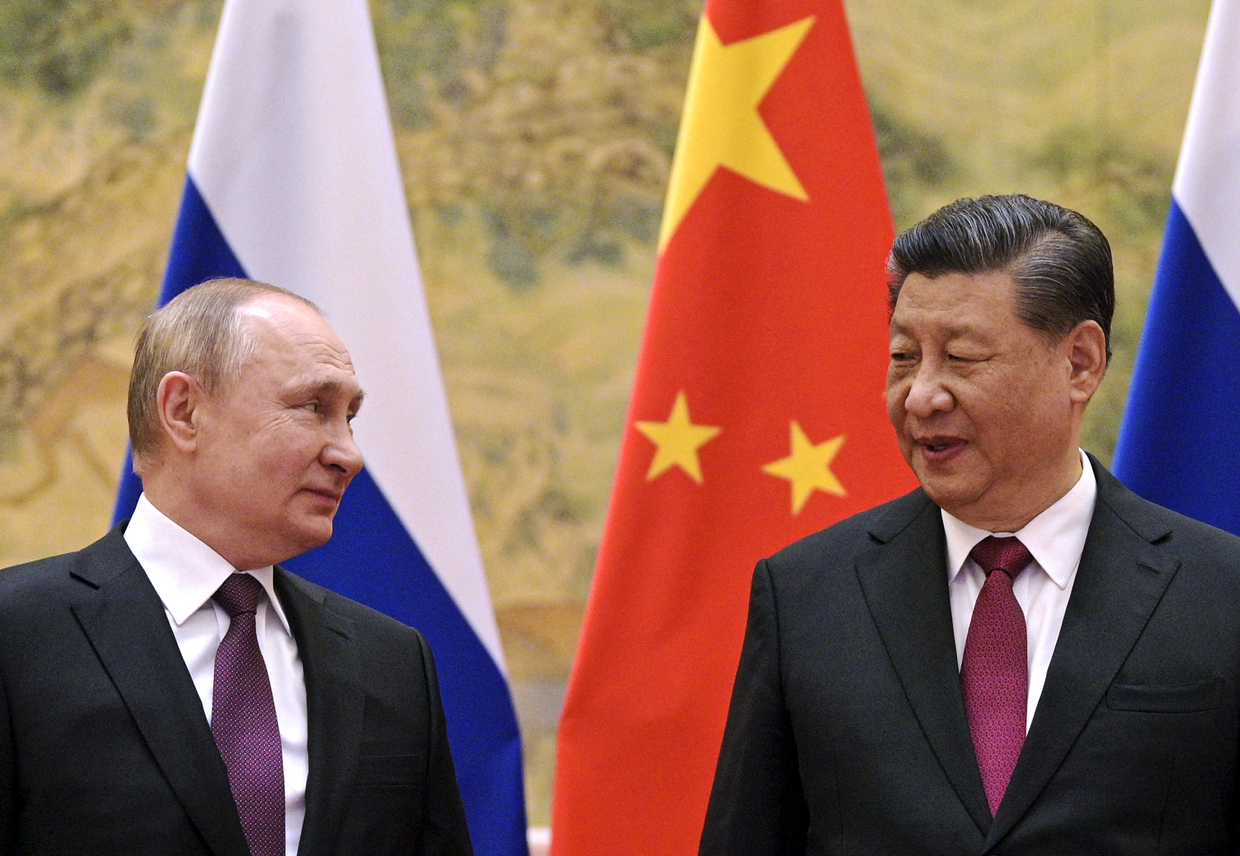
In 2022, the remnants of the ‘end of history’ era finally became a thing of the past. However, there has not been a return to the Cold War either. Russian policy is mainly concerned about security interests. It is not derived from ideology, although it does include components of the identity of ‘the Russian world’, as well as historical motives for opposing Nazism. Russia does not offer a global ideological alternative comparable to liberalism – nor has China yet taken such initiatives.
The end of the ‘end of history’ is notable for several other details. Firstly, a major power has risked giving up the benefits of the ‘global world’ overnight. Historians will argue about whether Moscow anticipated such harsh sanctions and the departure of hundreds of foreign companies so quickly. However, it is clear that Russia is vigorously adapting to the new realities and is in no hurry to return to US-centric globalization.
Secondly, Western countries have embarked on a very tough ‘purge’ of Russian assets abroad. Overnight, their jurisdictions ceased to be ‘safe havens’ where the ‘rule of law’ is followed. Now it is politics that calls the shots and Russia is the only harbor to which its citizens can return to relative peace. Stereotypes about the ‘stability and security’ of the West are breaking down. Of course, they are unlikely to begin a similar purge of other assets there. But looking at the Russians, outside investors are wondering whether they should hedge their risks.
Thirdly, it turned out that in the West, they might face not only asset stripping, but outright discrimination on the grounds of nationality. Thousands of Russians ‘fleeing’ the ‘bloody regime’ have suddenly faced rejection and contempt. Others trying to prove that they are even bigger ‘Russophobes’ than their host partners are running ahead of the anti-Russian propaganda train. However, this does not guarantee that the stubborn dogmatists will embrace them.
The conflict between Russia and the West is likely to drag on for decades, regardless of how the conflict in Ukraine ends. In Europe, Russia will play the role of North Korea, while possessing much greater capabilities. Whether Ukraine has the strength, the will, and resources to become a European South Korea is a big question. Conflict between Russia and the West will lead to a strengthening of China’s role as an alternative financial center and source of modernization. A stronger China will only accelerate its rivalry with the US and its allies. The ‘end of history’ has ended with a return to its usual course.
One of these is the collapse of the world order as a result of large-scale conflicts between centers of power. It remains to be seen if the next cycle will not be the last for mankind, given the risks of an open military clash between the great powers with a subsequent escalation into full-scale nuclear conflict.
